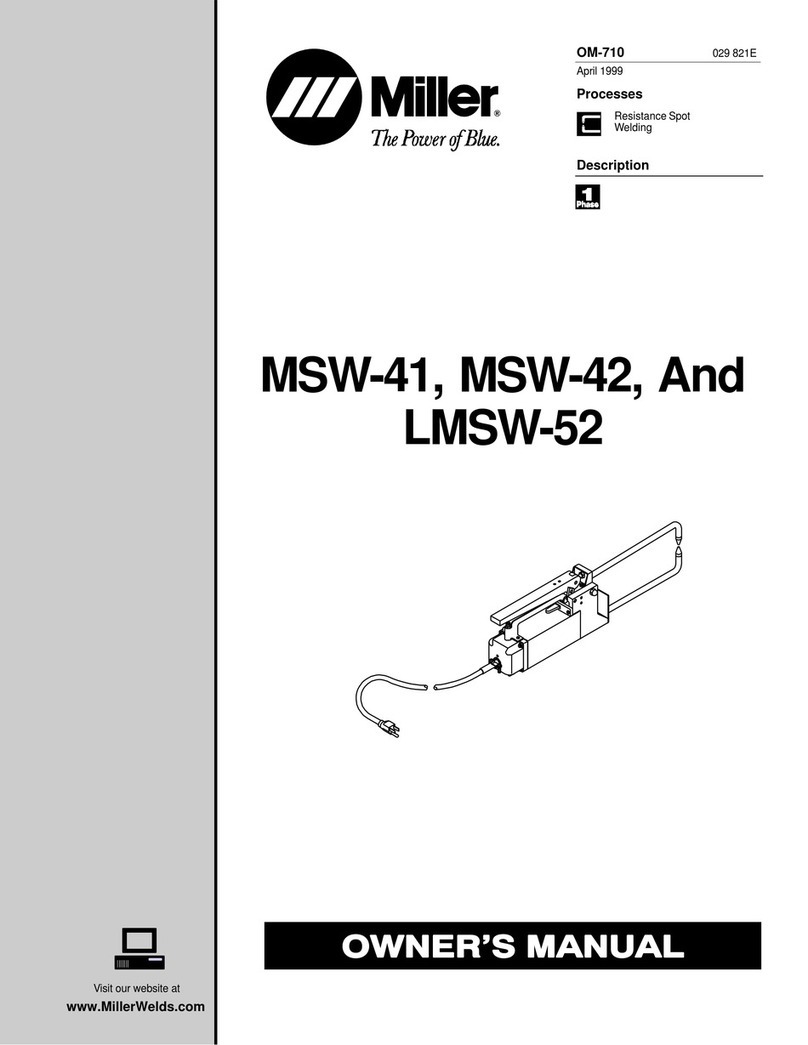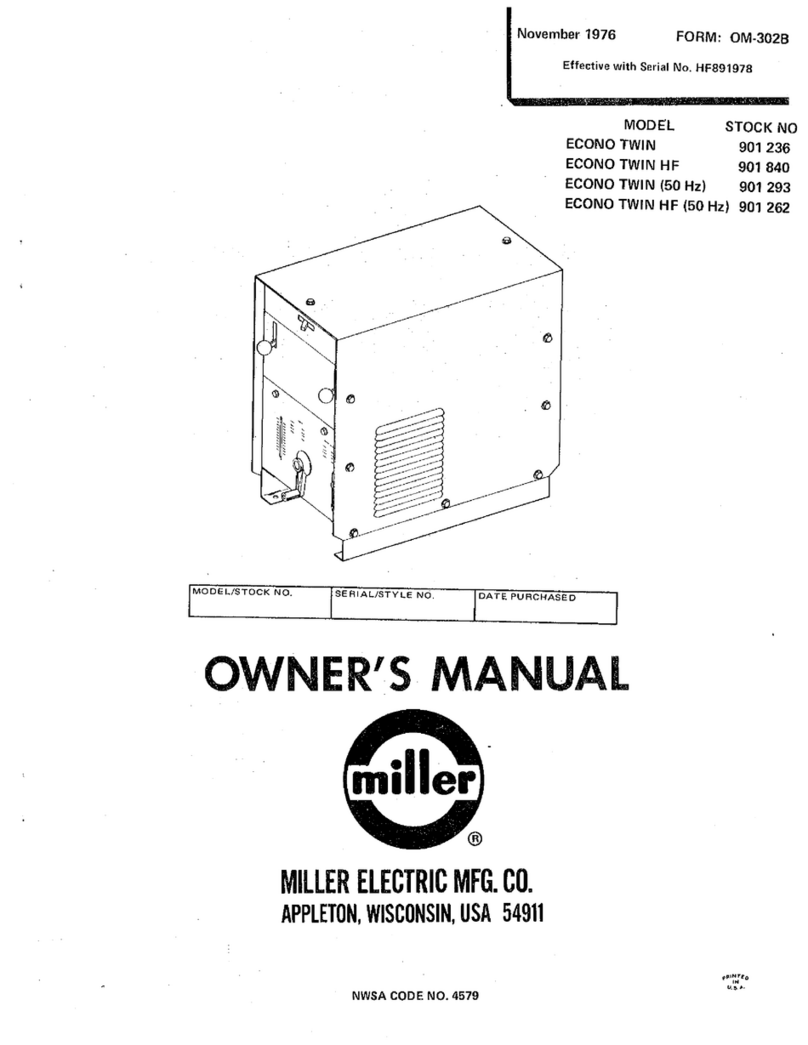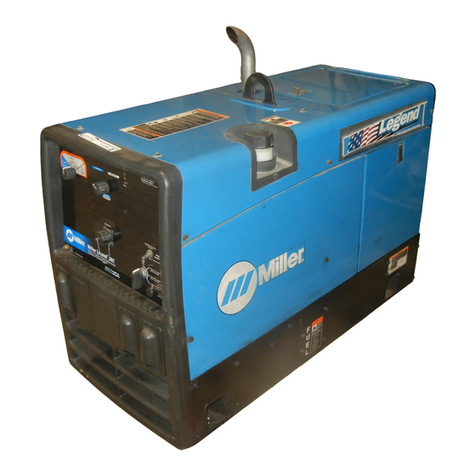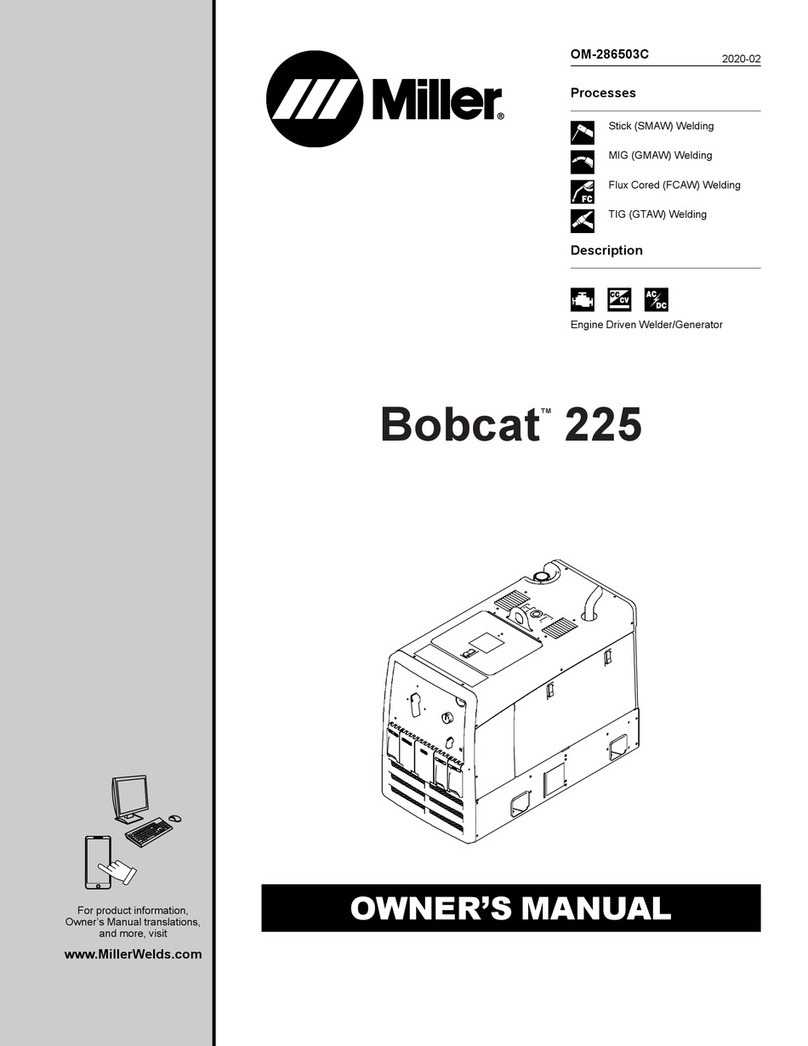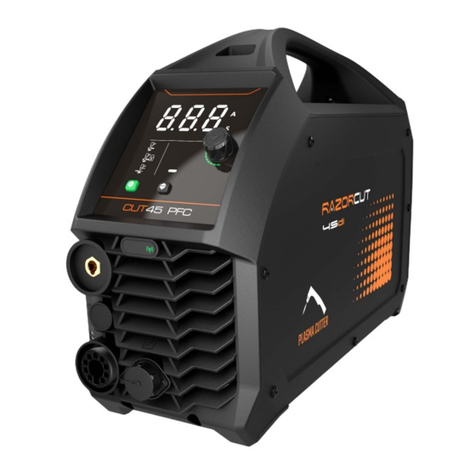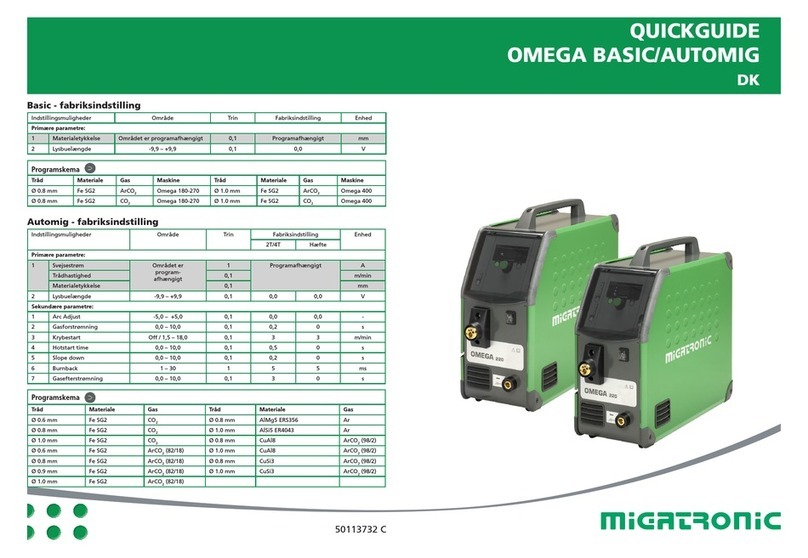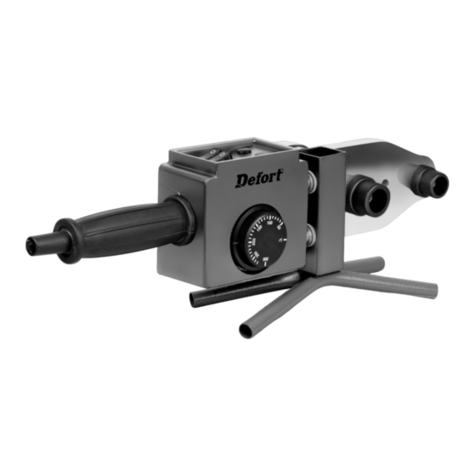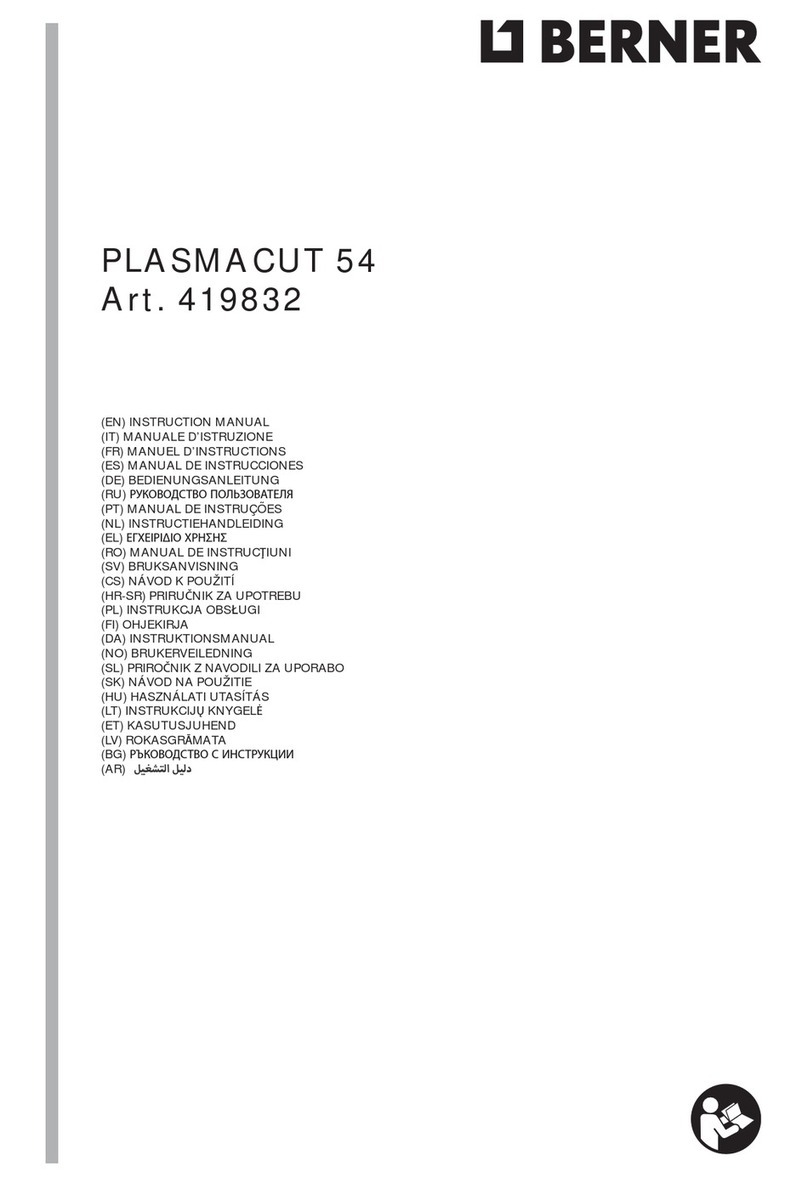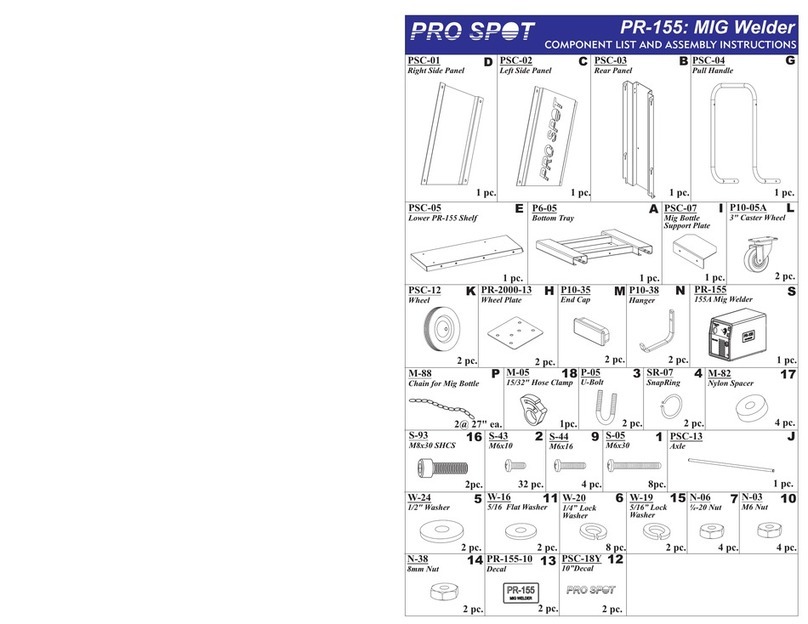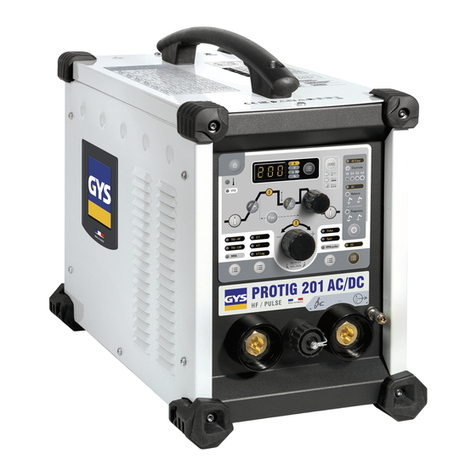Miller SP-1 User manual
Other Miller Welding System manuals
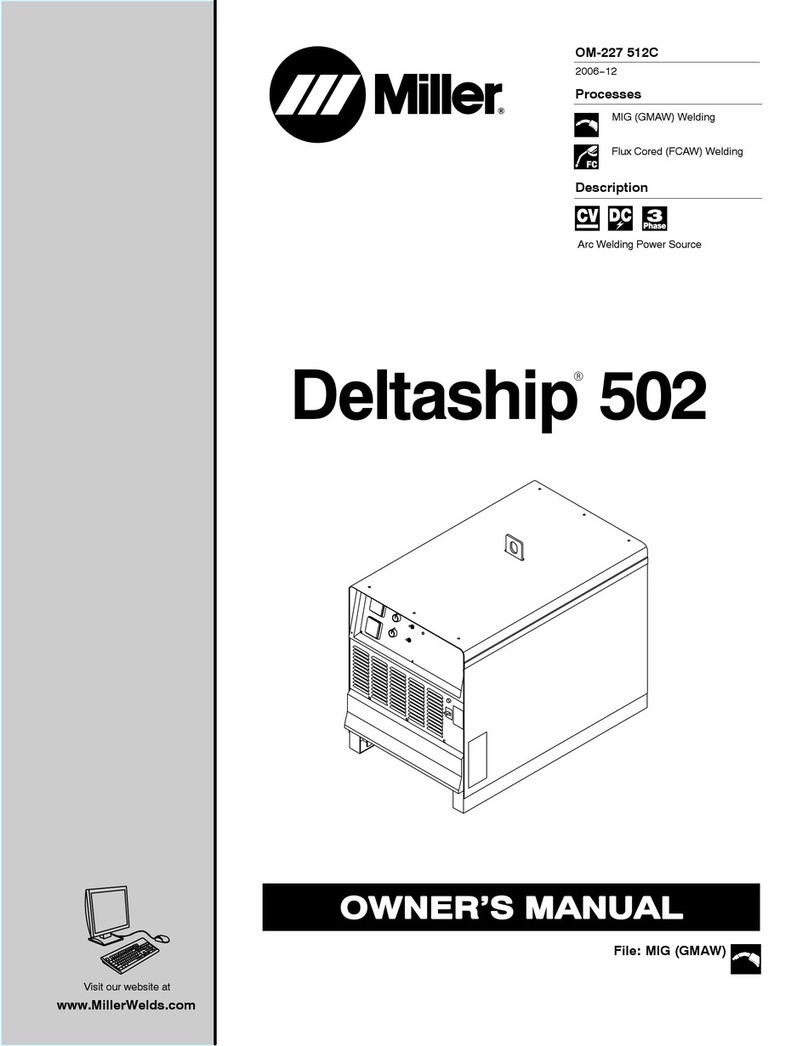
Miller
Miller Deltaship 502 User manual

Miller
Miller Millermatic 210 User manual
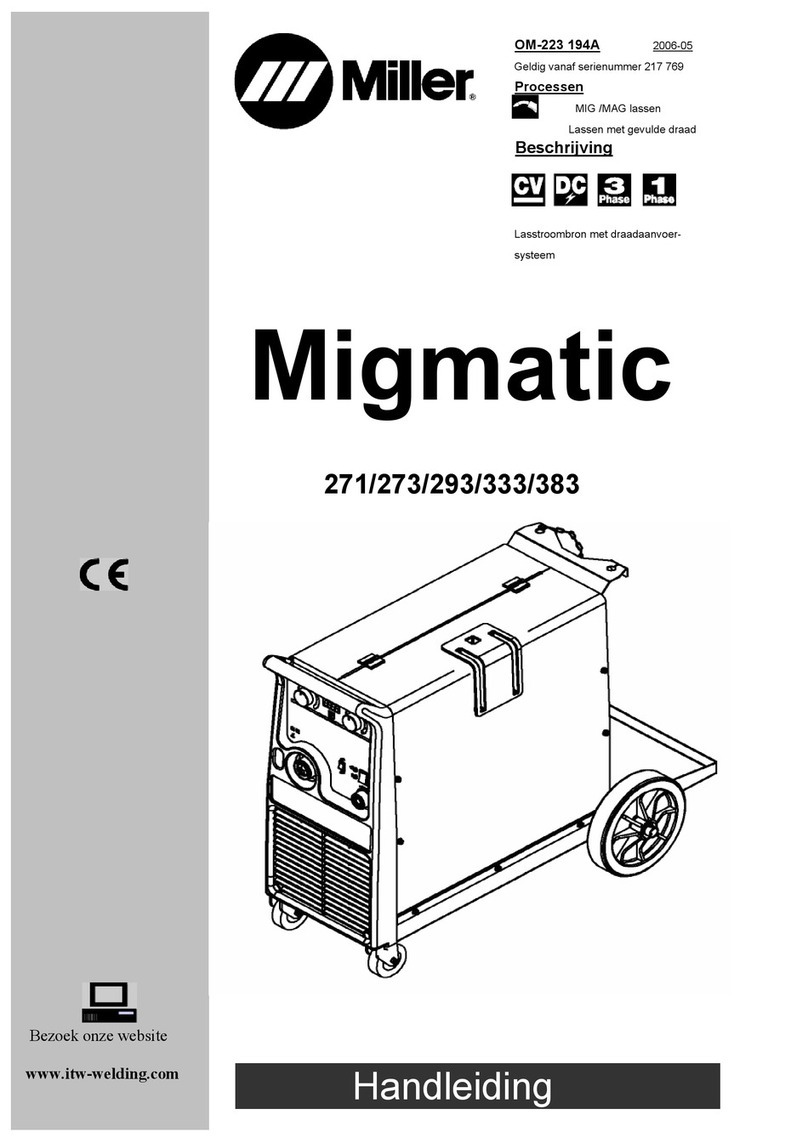
Miller
Miller Migmatic 271 User manual
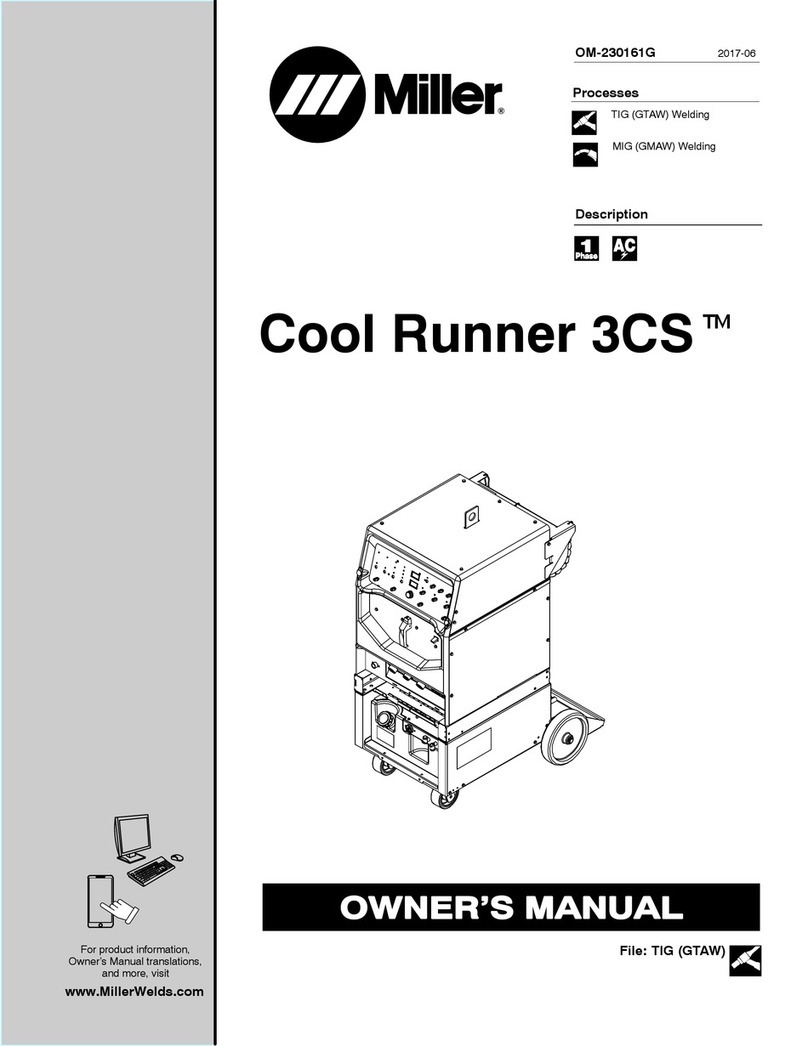
Miller
Miller Cool Runner 3CS User manual
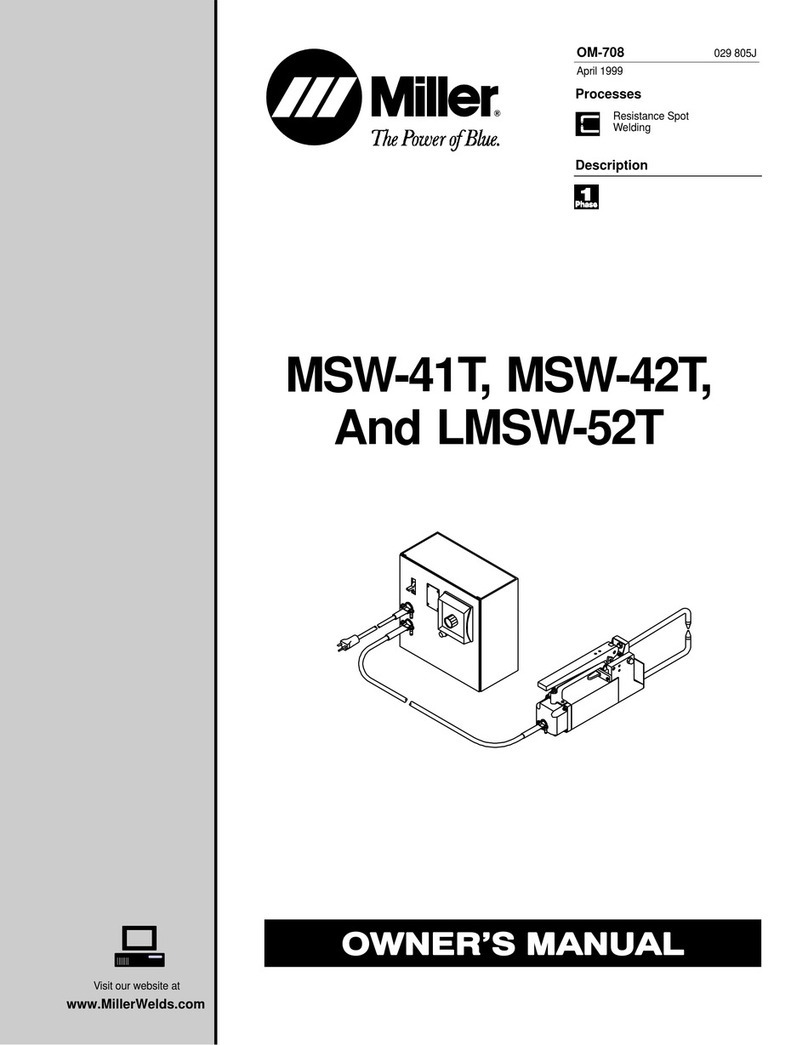
Miller
Miller LMSW-52T User manual

Miller
Miller XR - AlumaPro User manual

Miller
Miller Big Blue 400D User manual

Miller
Miller ST 44 Series User manual

Miller
Miller Millermatic 300 User manual
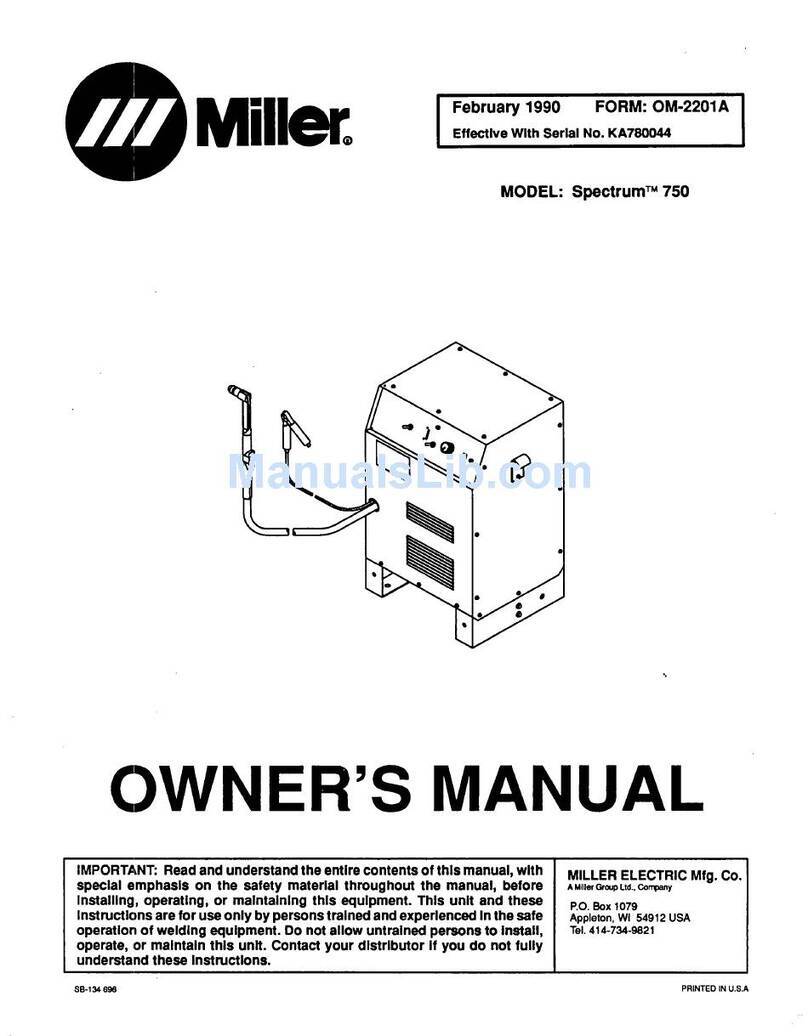
Miller
Miller SPECTRUM 750 User manual
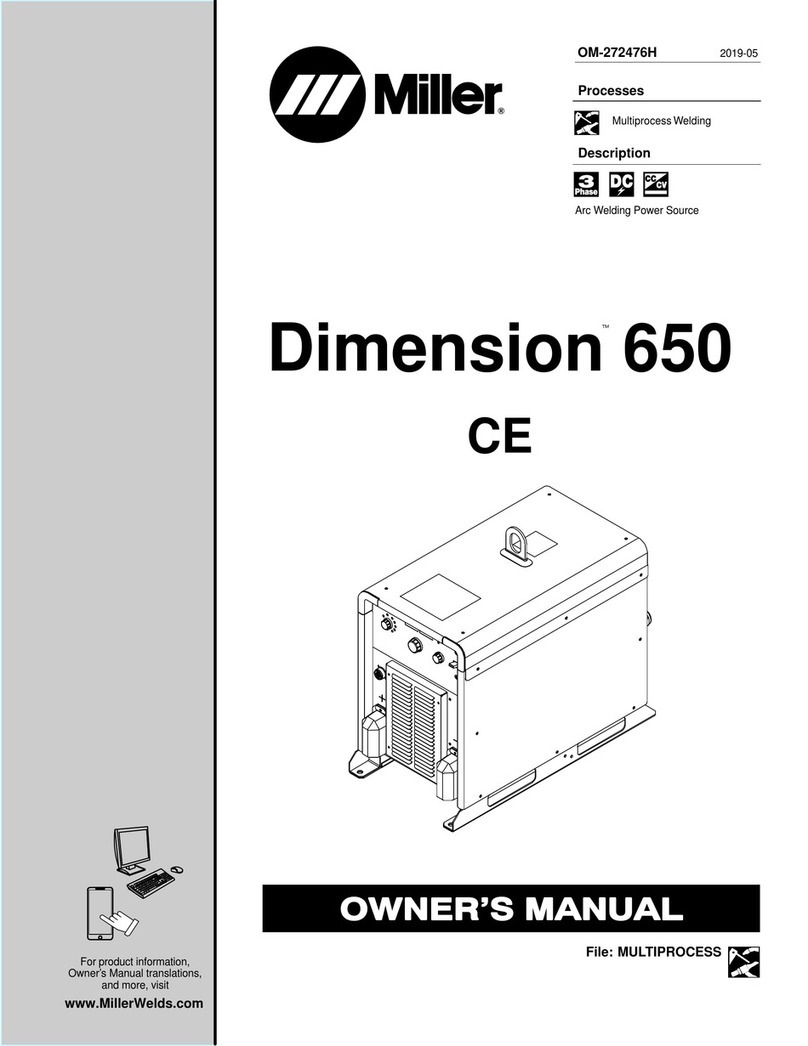
Miller
Miller Dimension 650 CE User manual

Miller
Miller Two Fifty Twin User manual

Miller
Miller Dynasty 280 DX User manual

Miller
Miller DYNASTY DX User manual

Miller
Miller Copilot User manual
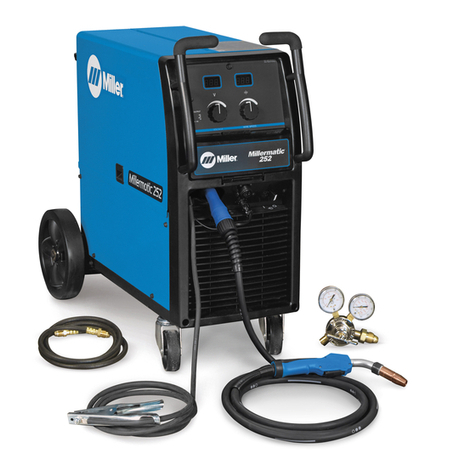
Miller
Miller Millermatic 252 User manual
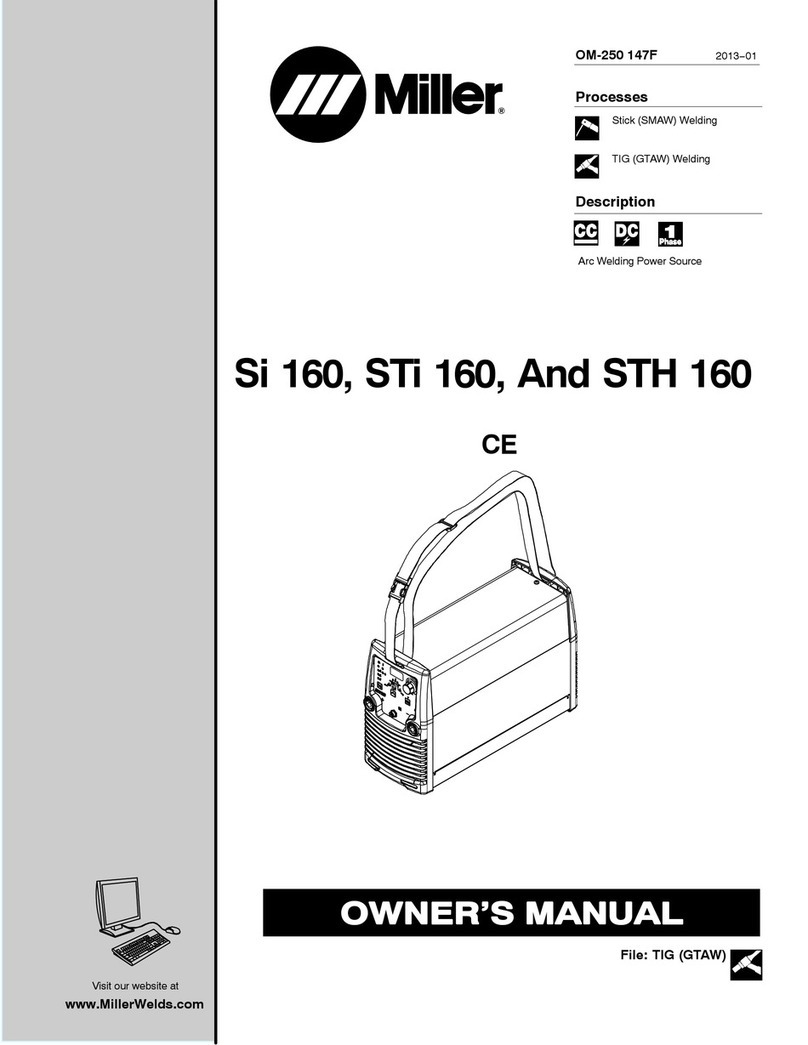
Miller
Miller STi 160 User manual

Miller
Miller Coolmate 1.3 User manual

Miller
Miller XMS 403 User manual
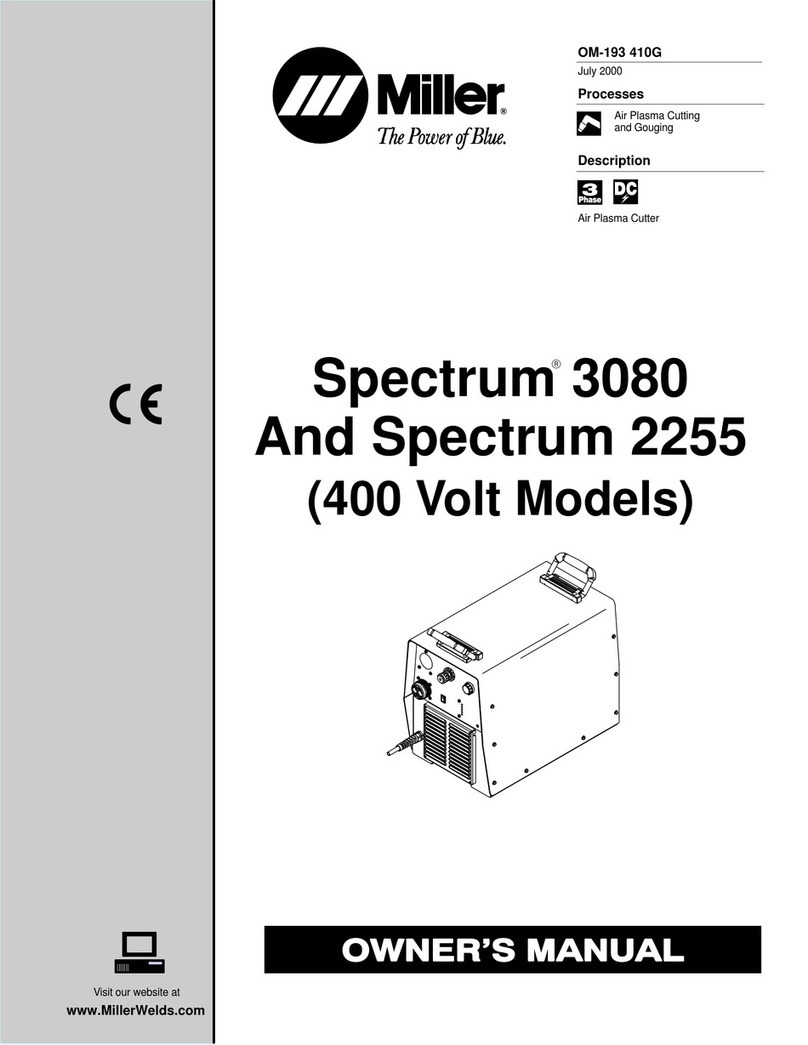
Miller
Miller Spectrum 3080 User manual
Popular Welding System manuals by other brands

Hobart Welding Products
Hobart Welding Products AirForce 375 owner's manual
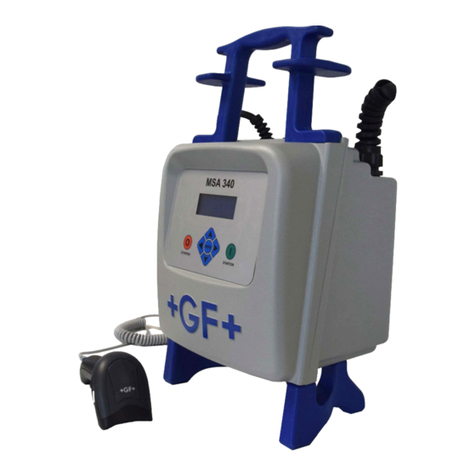
GF
GF MSA 330 instruction manual

Hakko Electronics
Hakko Electronics FX-888D instruction manual

Abicor Binzel
Abicor Binzel ABIPLAS WELD 100 W operating instructions

EWM
EWM Taurus 355 Basic TDM operating instructions

Thermal Dynamics
Thermal Dynamics PakMaster 100 XL plus operating manual
